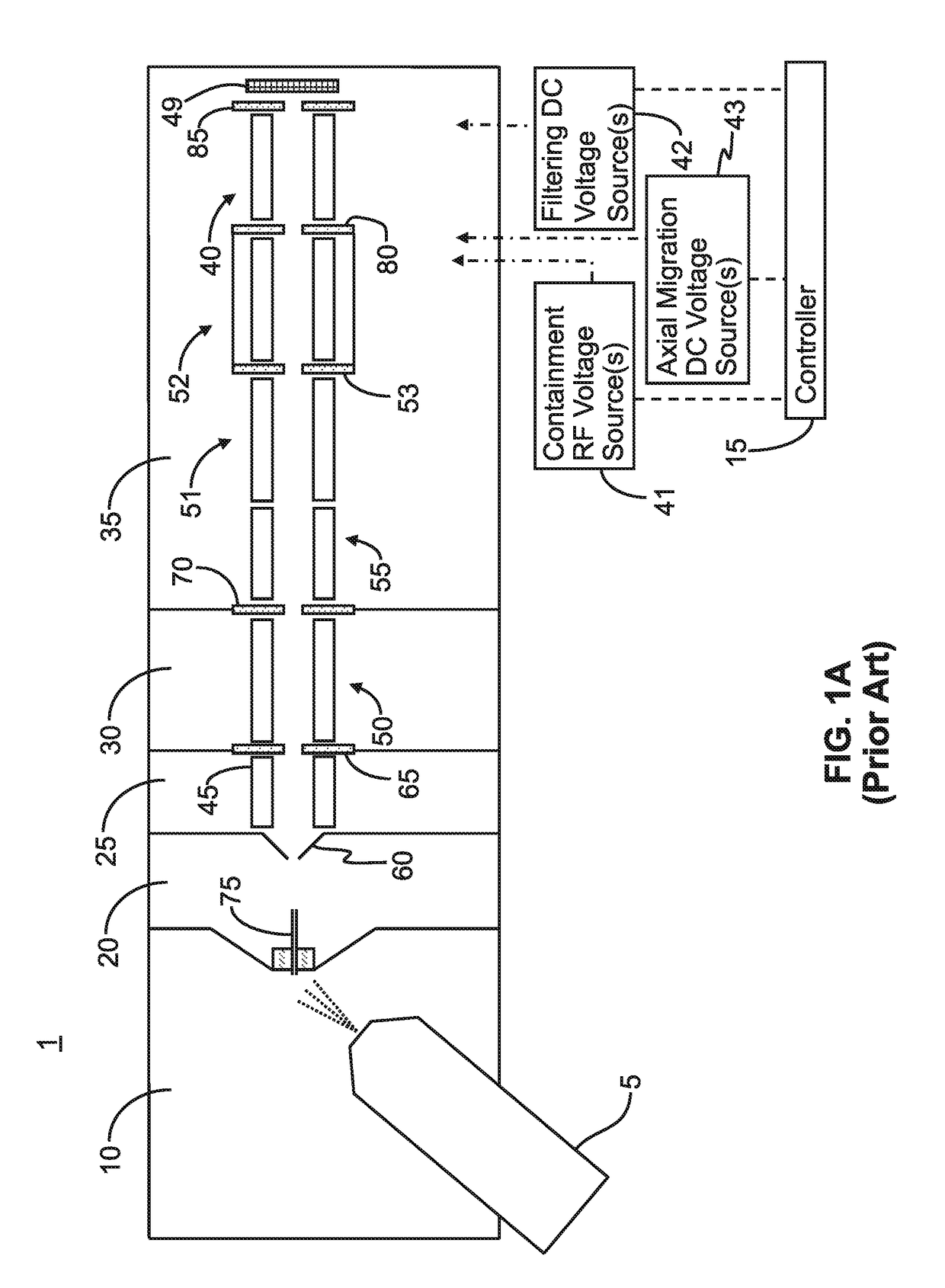Methods for tandem collision-induced dissociation cells
a technology of dissociation cells and tandem collisions, applied in the field of mass spectrometry and mass spectrometers, can solve the problems of slow or possibly even stalling of product ions formed in the collision cell, experimental difficulties, and reduced effective low-mass cuto
- Summary
- Abstract
- Description
- Claims
- Application Information
AI Technical Summary
Benefits of technology
Problems solved by technology
Method used
Image
Examples
Embodiment Construction
[0087]The following description is presented to enable any person skilled in the art to make and use the invention, and is provided in the context of a particular application and its requirements. Various modifications to the described embodiments will be readily apparent to those skilled in the art and the generic principles herein may be applied to other embodiments. Thus, the present invention is not intended to be limited to the embodiments and examples shown but is to be accorded the widest possible scope in accordance with the features and principles shown and described. The reader should be aware that, throughout this document, the term “DC” is used in accordance with its general usage in the art so as to mean “non oscillatory” without necessary implication of the existence of an associated electrical current. Thus, the usage of the terms “DC voltage”, “DC voltage source”, “DC power supply”, “DC potential” etc. in this document are not, unless otherwise noted, intended to nec...
PUM
 Login to View More
Login to View More Abstract
Description
Claims
Application Information
 Login to View More
Login to View More - R&D
- Intellectual Property
- Life Sciences
- Materials
- Tech Scout
- Unparalleled Data Quality
- Higher Quality Content
- 60% Fewer Hallucinations
Browse by: Latest US Patents, China's latest patents, Technical Efficacy Thesaurus, Application Domain, Technology Topic, Popular Technical Reports.
© 2025 PatSnap. All rights reserved.Legal|Privacy policy|Modern Slavery Act Transparency Statement|Sitemap|About US| Contact US: help@patsnap.com



